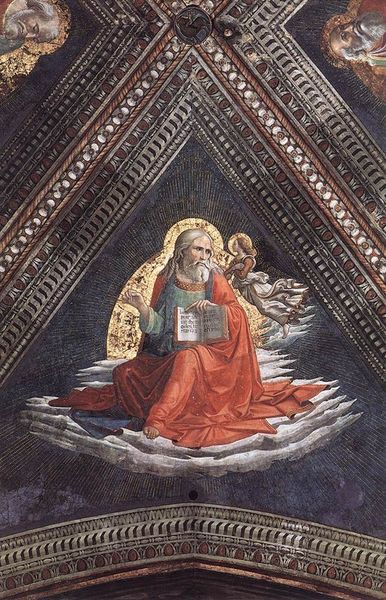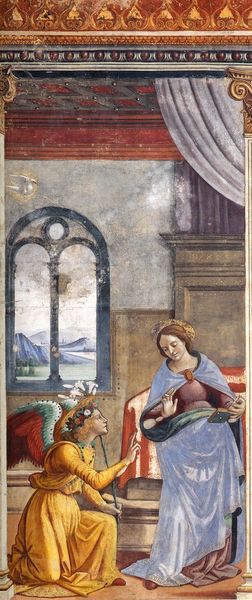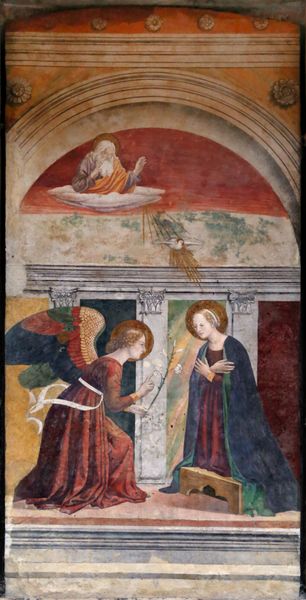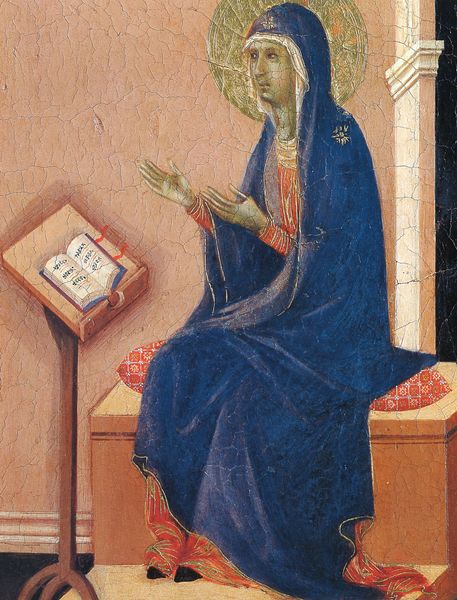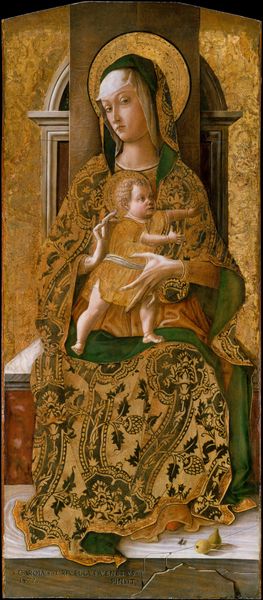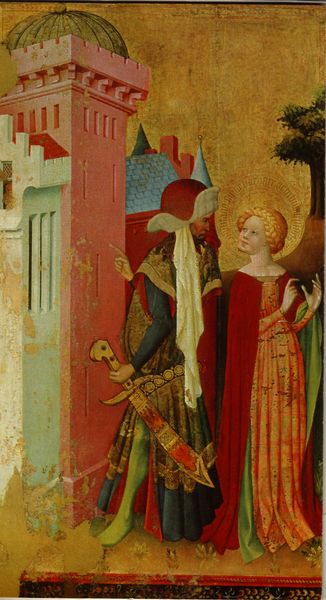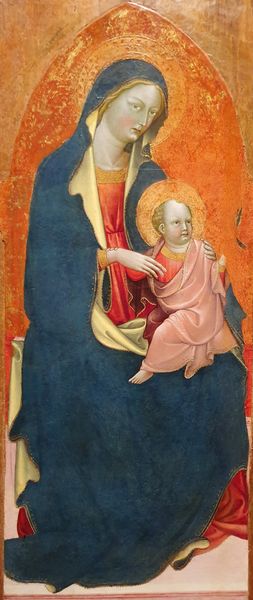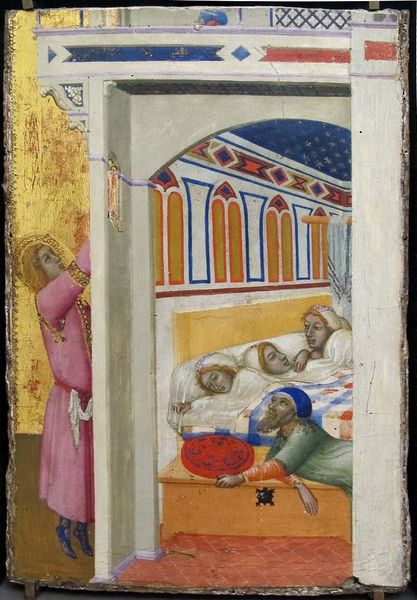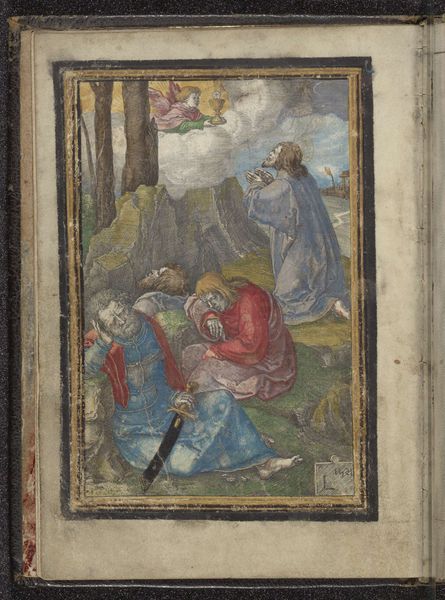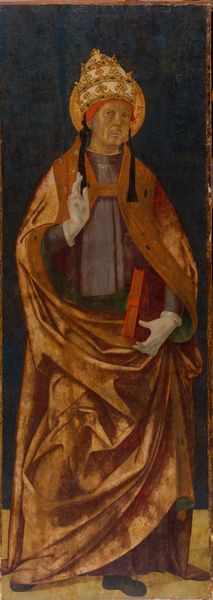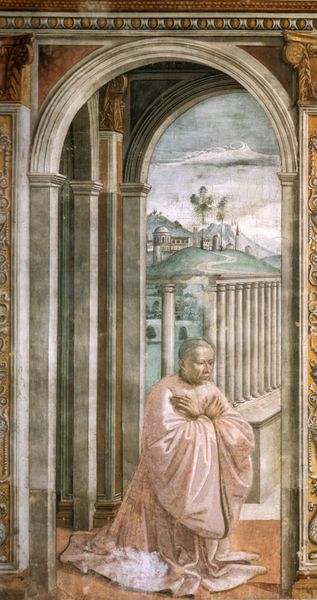
painting, fresco
#
portrait
#
narrative-art
#
painting
#
sculpture
#
landscape
#
figuration
#
fresco
#
christianity
#
italian-renaissance
Copyright: Public domain
Curator: Looking up at Domenico Ghirlandaio's "St. Mark the Evangelist," painted around 1490 in the Santa Maria Novella, what strikes you? Editor: He seems so isolated. Perched up there, surrounded by ornate geometry. There is this overwhelming feeling of separation between the saint and the world below. Curator: Interesting. Think about St. Mark himself – he's usually paired with the winged lion. See how it rests passively at his feet, its face almost melancholic? This fresco presents not just a saint, but attributes linked to Mark, suggesting the weight of divine inspiration, the solitude of sacred texts. Editor: And he's actively writing or perhaps correcting a manuscript. Is Ghirlandaio depicting the Evangelist at a crucial moment in the shaping of religious doctrine? Considering the work's prominent display within a historically significant Florentine church, "St. Mark" doesn't exist in a vacuum, does it? It had to function in a particular historical environment. Curator: Absolutely. Florentine society valued learning and literacy, particularly with the humanist movement gaining momentum, but within the walls of a Dominican church! Look, here he’s creating a holy narrative. Notice how his clothes are rendered; they provide context of his importance to society. Gold, commonly linked to God, glows around St. Mark's halo, and that divine presence is subtly reinforced again and again by these subtle elements in our shared visual vocabulary. Editor: What about the viewer down on the floor? What does he receive from all that’s included up there in that triangular space? He can easily decipher that Mark is a powerful being—a learned intellectual with a deep connection with God, but not truly among them. A representation of holiness intended for public consumption, really. Curator: Exactly. Think about the role these images play. In Renaissance Florence, it was integral to religious and cultural identity, blending spiritual doctrine with visual literacy and asserting civic pride with beauty. Editor: In that triangular space it becomes the embodiment of cultural power. This art then becomes this political statement. Curator: I think we both discovered fresh meaning in this Renaissance gem. Editor: Indeed. Now when can we get up to more fun with art like this?
Comments
No comments
Be the first to comment and join the conversation on the ultimate creative platform.
